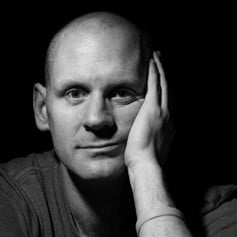Recurring themes and back to the future (an implant dentistry blog)


The first time I ever saw a connective tissue graft being used in implant dentistry was about 25 years ago; it was one of the early videos produced by the University of Bern and Danny Buser showing the placement of a dental implant in the upper anterior region.
I think I still have the video, and in fact, I think I might be able to dig it out in this sabbatical because I'm going to do a little bit of a digital clear out of all the stuff that I ever saved over the space of that four weeks, and it would be fascinating to watch again to see where we've come from, to see where we're going to and to see some of the stuff that comes back around.
The way Danny Buser used a CT graft in that video is not how we would use a CT graft; now, things have moved on, and people understand more.
The problem with using a CT graft straight on top of a GBR at that time was that it just seemed to disappear and didn't hold any more volume than anything else.
Science knows more now; experience has taught us also that the way we use soft tissue and begin to use soft tissue more and more in routine practises makes things better and better for patients and makes the outcomes better for everyone.
And so, over the past three or four years, from where I sit and implant dentistry and what I see, soft tissue management, soft tissue augmentation has become increasingly popular, more and more fashionable, and more desirable.
There is a fascinating counterbalancing point here, though, isn't there? If you decide to do soft tissue grafting as part of your implant treatment, the complexity of the procedure goes up, the time spent goes up, the costs go up, and therefore, it becomes more expensive for the patient.
Striking the 'prethics' balance between providing the best possible care you can and making sure that you don't go bust is a really difficult circle to square.
The demand for education and soft tissue augmentation is increasing and increasing; global courses, grandstand speakers, presentations at Congresses, and trips to far-flung places, it's all possible, it's all feasible, but perhaps the best thing to do with this is to start with the starter and the straightforward principles and the application of soft tissue grafting (which can also help the rest of your dentistry)
Rajan Nansi, The Campbell Clinic specialist periodontist and former president of the British Periodontal Society, will be providing a two-day soft tissue workshop in January of next year.
We have designed the workshop very carefully to be the most practical and most appropriate to take through your practice and to build your soft tissue skills.
We've done this in conjunction with Chris Mason at Hu-Friedy. We have extraordinary soft tissue kits for you to try and use and play with and develop skills with, and we've also worked hard with the guys at Geistlich so that you can make sure that you know how to provide soft tissue procedures, using both grafts from the patient and grafts from a packet and the pros and cons of each.
The key to this type of thing is practical practise, and there are tonnes and tonnes of that in the soft tissue workshop.
If this is an area of work that you think might benefit your practice and benefit your patients and yourself, there might not be a better place to start.
Click here to get the details.
Look forward to seeing you.
Blog Post Number - 4011




Leave a comment